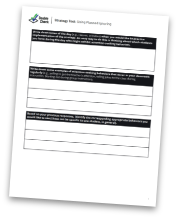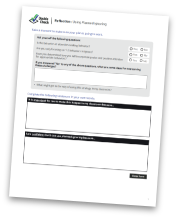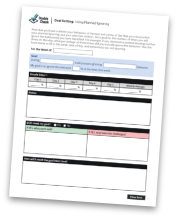Strategy: Using Planned Ignoring
Check-Up Menu > Using Planned Ignoring
2) Planned ignoring is never an appropriate strategy for behavior that is harmful to the student or others (e.g., aggressive behavior, bullying). These behaviors will require the use of a different strategy.
How To
How to Use Planned Ignoring
Step 1: Identify the student(s) of interest and choose problem behaviors that you will ignore. Decide which problem behaviors you want to focus on and which ones you will not focus on. Think about those behaviors that you feel are most disruptive in the classroom. What do these behaviors look like? Are they different across students? When do they occur? It helps to describe them so you know exactly when to implement your ignoring. Also, think about the reason the student is exhibiting the behavior. Is the student exhibiting the behavior because they are seeking your attention or the attention of others?
Step 2: Practice ignoring the problem behaviors you have identified. This can include turning away, removing eye contact with the student, and continuing instruction when the behaviors occur. Make sure to provide positive attention to the student(s) when they are exhibiting the behaviors that you DO want to see! You can also give attention to other students for exhibiting appropriate behaviors as you are ignoring the problem behavior of another student.
Step 3: Make sure to record when the problem behavior occurs, when you ignored the behavior, and if you provided positive attention afterward. Tracking this information will help you to identify your progress regarding the use of the strategy and help problem solve later on.
Step 4: Perform steps 2-3 daily for one week and evaluate your implementation efforts at the end. Did you find that you were consistent with using the strategy each time the student exhibited the problem behavior? Did you remember to provide positive attention/reinforcement for the desired behaviors? Did the student(s) problem behaviors decrease?
Strategy Tool

Reflection

Goal Setting

References to Other Relevant Resources:
Hall, R. V., & Hall, M. C. (1998). How to use planned ignoring (extinction). Pro Ed.
Gable, R. A., Hester, P. P. , Rock, M. L. , & Hughes, K. (2009). Back to Basics: Rules, Praise, Ignoring, and Reprimands Revisited. Intervention in School and Clinic, 44 (4), 195-205.